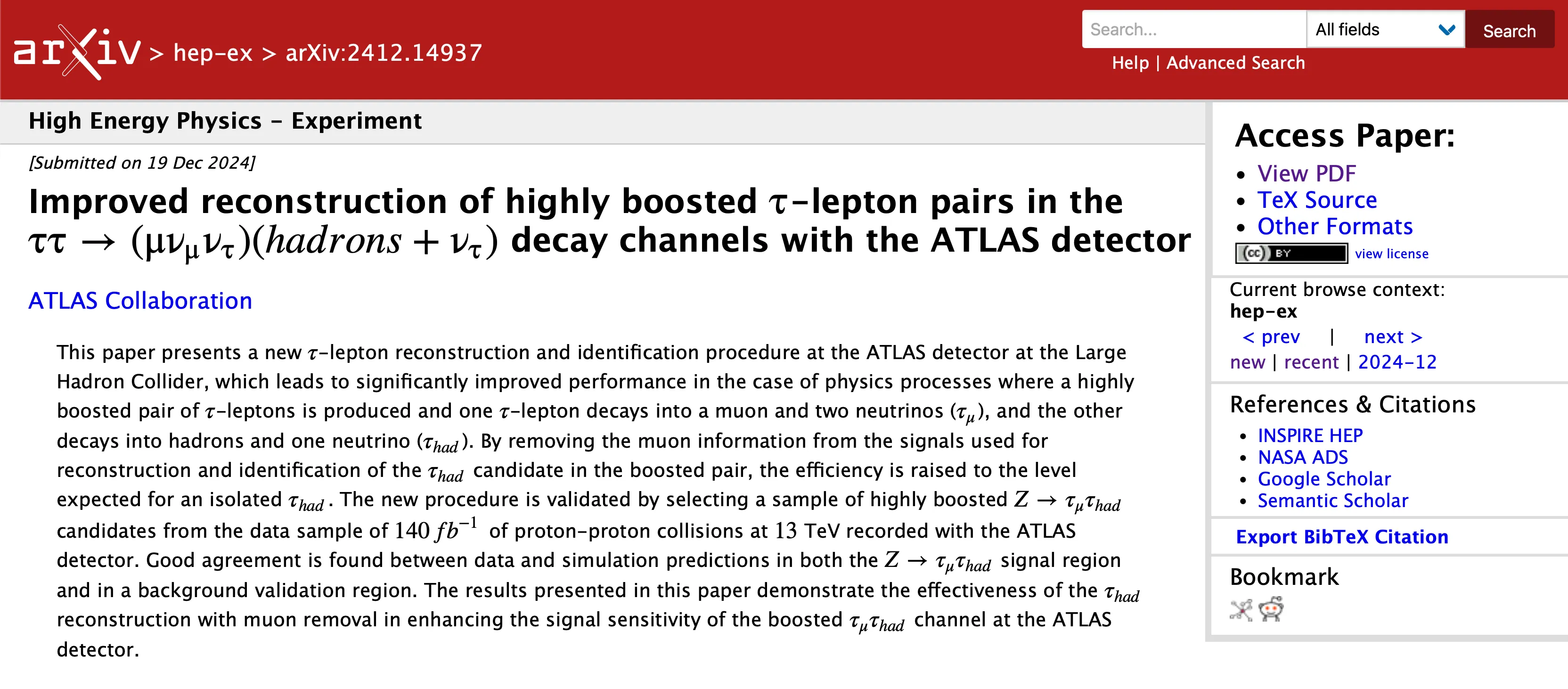
I’m thrilled to announce the publication of my first ATLAS paper as the lead author, titled “Improved reconstruction of highly boosted τ-lepton pairs in the ττ → (μ ν_μ ν_τ) (hadrons + ν_τ) decay channels with the ATLAS detector” has been submitted to EPJC, now available on arXiv (2412.14937)!
This work introduces a novel method for reconstructing and identifying τ-lepton pairs produced with high momentum (boost) in proton-proton collisions at the Large Hadron Collider. Specifically, it focuses on events where one τ-lepton decays into a muon and neutrinos (τ_μ), and the other decays into hadrons and a neutrino (τhad). By refining the reconstruction process—particularly by excluding muon information from the hadronic τ candidate—we’ve achieved a significant improvement in efficiency, aligning it with expectations for isolated τ_had candidates.
To validate our approach, we analyzed data corresponding to an integrated luminosity of 140 fb⁻¹ from proton-proton collisions at a center-of-mass energy of 13 TeV, recorded by the ATLAS detector. We selected a sample of highly boosted Z → τ_μ τ_had candidates and observed excellent agreement between our data and simulation predictions. These findings demonstrate the effectiveness of our method in enhancing signal sensitivity for boosted τ_μ τ_had channels within the ATLAS experiment.
This advancement holds promise for future analyses involving τ-leptons, particularly in searches for new physics phenomena where boosted τ-lepton pairs are prevalent. I’m grateful for the support and collaboration of my colleagues at ATLAS and look forward to contributing further to our understanding of particle physics.